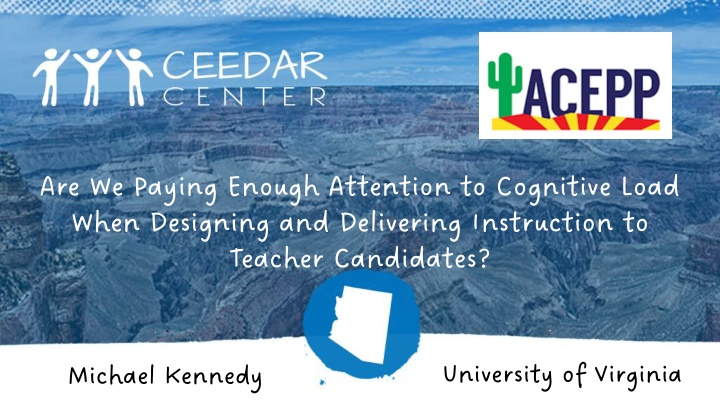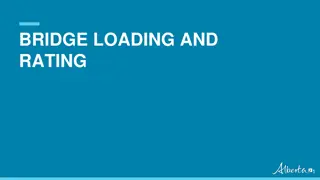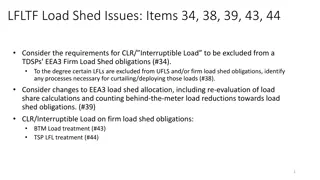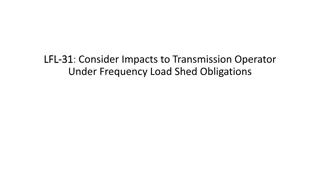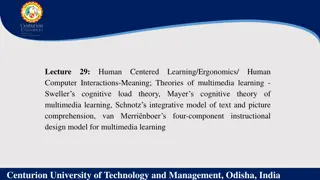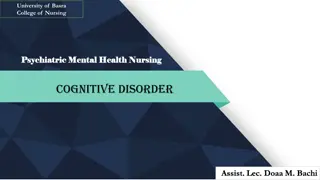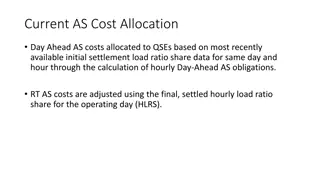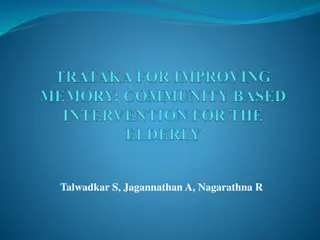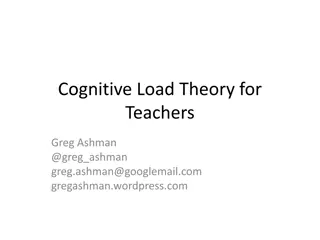Are We Paying Enough Attention to Cognitive Load When Designing Instruction for Teacher Candidates?
Exploring the importance of considering cognitive load in designing and delivering instruction for teacher preparation, this content delves into the implications for teacher candidates and classroom instruction. The author reflects on their journey from classroom teaching to becoming a teacher educator, emphasizing the need for effective strategies in teaching adults and students. The narrative also touches on the challenges and experiences faced in delivering guest lectures, highlighting the significance of well-prepared presentations and the impact of cognitive load on learning outcomes.
Download Presentation

Please find below an Image/Link to download the presentation.
The content on the website is provided AS IS for your information and personal use only. It may not be sold, licensed, or shared on other websites without obtaining consent from the author.If you encounter any issues during the download, it is possible that the publisher has removed the file from their server.
You are allowed to download the files provided on this website for personal or commercial use, subject to the condition that they are used lawfully. All files are the property of their respective owners.
The content on the website is provided AS IS for your information and personal use only. It may not be sold, licensed, or shared on other websites without obtaining consent from the author.
E N D
Presentation Transcript
Are We Paying Enough Attention to Cognitive Load When Designing and Delivering Instruction to Teacher Candidates? University of Virginia Michael Kennedy
Part I Are We Paying Enough Attention To Cognitive Load? Implications For Teacher Preparation & Classroom Instruction
Building Part II Declarative Procedural Conditional Knowledge & The Role of Cognitive Load For Our Teacher Candidates
Are We Paying Enough Attention To Cognitive Load? Implications For Teacher Preparation & Classroom Instruction
Are We Paying Enough Attention To Cognitive Load? (P.S. No. The answer is no) Implications For Teacher Preparation & Classroom Instruction
Implications For Designing and delivering instruction for teaching adults and students!
I left classroom teaching to become a teacher educator
I left classroom teaching to become a teacher educator Sadly The playbook on how to become an effective college instructor is a little thin
My First Guest Lecture: Superbly Prepared
Who wouldnt enjoy a 100+ slide PowerPoint presentation jam packed with 4-5 thorough bullet points per slide on the finer points of special education law crammed into 75 electric minutes???!!!
3 Types of Cognitive Load 1. Intrinsic 2. Extraneous 3. Germane
Intrinsic Load Imposed by the basic structure of information the learner needs to acquire, regardless of how it is taught. Sweller, Ayers, & Kalyuga, 2011
Intrinsic Load Imposed by the basic structure of information the learner needs to acquire, regardless of how it is taught. If content is complex, it imposes more intrinsic load than content that is less/not complex. Sweller, Ayers, & Kalyuga, 2011
Intrinsic Load Imposed by the basic structure of information the learner needs to acquire, regardless of how it is taught. If content is complex, it imposes more intrinsic load than content that is less/not complex. Even if the material isn t itself complicated, but there is a lot of it, intrinsic load will be taxed. Sweller, Ayers, & Kalyuga, 2011
Interactivity Creates Intrinsic Load Element Element
Prior Knowledge impacts intrinsic load (if you have some, IL is lower, if not not)
Many students with disabilities have some level of dysfunction in terms of cognitive functionality
Many students with disabilities have some level of dysfunction in terms of cognitive functionality IL almost always higher for these kids
New teachers also can struggle with high amounts of intrinsic load because they re literally doing things for the first time
Extraneous Load Imposed by the method(s) selected to deliver instruction. Sweller, Ayers, & Kalyuga, 2011
Extraneous Load Imposed by the method(s) selected to deliver instruction. Some instruction can cause extremely high amounts of extraneous load, which interferes with learning. Other instructional approaches keep extraneous load to a minimum. It just depends Sweller, Ayers, & Kalyuga, 2011
Paradox: High extraneous load for students But can be low for teachers
Recipe for high IL and EL: Using EBPs with fidelity, collecting data, monitoring behavior, implementing IEPs, collaborating, being observed, etc
Extraneous Load Imposed by the method(s) selected to deliver instruction. Intrinsic load and extraneous load are additive. The sum is the total cognitive load imposed by content that needs to be learned. IL + EL = Total Load Sweller, Ayers, & Kalyuga, 2011
Extraneous Load Imposed by the method(s) selected to deliver instruction. Intrinsic load and extraneous load are additive. The sum is the total cognitive load imposed by content that needs to be learned. The total cognitive load determines the required working memory resources needed to process information. Sweller, Ayers, & Kalyuga, 2011
Germane Load Remaining cognitive resources within working memory devoted to addressing intrinsic and extraneous load. Sweller, Ayers, & Kalyuga, 2011
Germane Load Cognitive resources within working memory devoted to addressing intrinsic and extraneous load. If working memory resources required to deal with the combined intrinsic and extraneous load are exhausted or overwhelmed, learning is unlikely to occur (no germane load left). Sweller, Ayers, & Kalyuga, 2011
For teachers: No germane load left? Probably no EBPs
For Many Students There is a Mismatch Between Student s Learning Needs & The Demands of the Curriculum Especially in Content Area Courses Harbort et al., 2007; King-Sears et al., 2014; Moin et al., 2009; Mutch-Jones et al., 2012
Demands of Content Courses Student s Learning Needs Vannest et al., 2009; Wei et al., 2010; Robinson, 2002
Prevailing Pedagogy Student s Learning Needs Vannest et al., 2009; Wei et al., 2010; Robinson, 2002
Also a mismatch between everything we need new teachers to learn in a very short amount of time and their cognitive capacity to make sense of it all and become proficient at implementation Feldon, 2007
Whoops It s apparently very easy to overload learner s limited cognitive capacity This goes for teachers in training, PD, or students with and without disabilities.
Whoops It s apparently very easy to overload learner s limited cognitive capacity. And when that happens learning doesn t.
